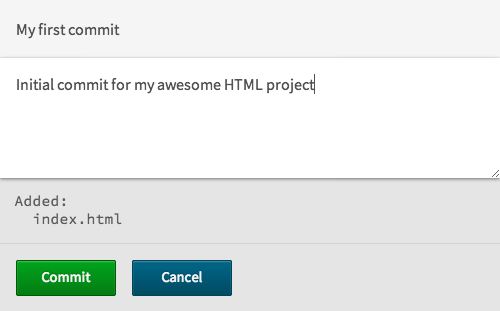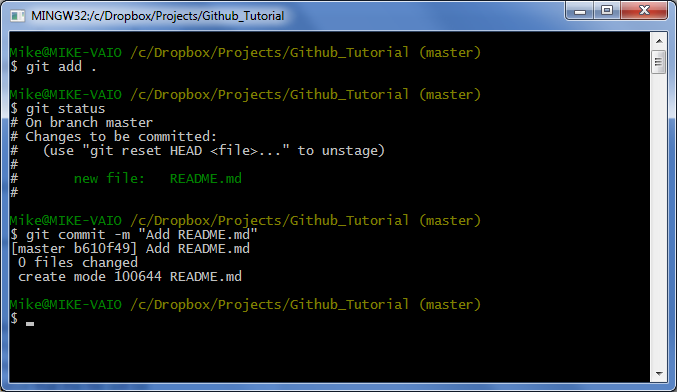
If your commits are too large, contain unrelated changes, or are unclearly described in the commit message, you will lose the benefits of viewing and changing history. Being able to shape your history is one of the greatest advantages of using Git. This can save time, but the risks are two-fold: Poorly thought out historyīy staging all available changes, the clarity of your history will likely suffer. Staging all available files is a popular, though risky, operation.
#Git commit new files code
Add the files or segments of code that should be included in the next commit: git add README.md.Checkout to that branch: git checkout update-readme.Create a branch: git branch update-readme.Git add usually fits into the workflow in the following steps: You can see all of the many options with git add in git-scm’s documentation. git add -p: Interactively stage hunks of changes.: Stage all files (that are not listed in the. git add : Stage a specific directory or file.
#Git commit new files how to
How to Use git add Common usages and options for git add And, they both work best when used thinking of their joint functionality. They don’t work when they aren’t used together. Git add and git commit go together hand in hand. If you think or use git stage in place of git add, the reality of what is happening may be more clear. The language of “add” when you’re actually “deleting” can be confusing.

This means if you git add a deleted file the deletion is staged for commit. You can select all files, a directory, specific files, or even specific parts of a file for staging and commit. Git add selects that file, and moves it to the staging area, marking it for inclusion in the next commit. git add allows you to systematically shape your commits and your history anyway.

Maybe you are making changes to files that aren’t logical or atomic units of change. Commits should be logical, atomic units of change – but not everyone works that way. This step allows you to choose what you are going to commit.

Then, before you commit, you must git add. As you’re working, you change and save a file, or multiple files.


 0 kommentar(er)
0 kommentar(er)
